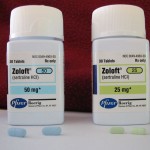
Oken gives this advice in response to a query from the parent of a six-year-old girl who had two heart defects — a ventricular septal defect and an atrial septal defect – surgically repaired when she was an infant. The daughter is now healthy, and the parent wanted to know if she still needs to see a cardiologist.
Oken responds that even though the girl is healthy now, she should have occasional checkups with a physician familiar with congenital heart defects.
“A common misconception is that those who were treated for congenital heart disease in childhood were cured by the surgery that corrected the defects,” Oken writes. “That is rarely the case. Individuals born with heart defects need continuing care throughout their lives.”
Congenital heart defects are heart problems that develop before birth.
Numerous studies have linked pregnant women’s use antidepressants categorized as selective serotonin reuptake inhibitors, or SSRIs, with heart and lung defects including ventricular septal defects in their newborns. SSRIs include Prozac, Effexor, Lexapro, Celexa and Zoloft.
According to Oken, ventricular septal defect, or VSD, is the most common congenital heart defect. It occurs when the muscular wall (septum) separating the bottom chambers of the heart (right and left ventricles) doesn’t fully form. The hole allows oxygen-rich blood to leak from the left ventricle into the right ventricle and out into the pulmonary arteries leading to the lungs, instead of moving into the aorta and on to the body.
Patients should consult their doctors before making any changes in their medication. A consultation with an SSRI lawyer is also important if there are significant injuries.
See the article here:
https://www.mayoclinic.org/medical-edge-newspaper-2009/feb-27a.html
